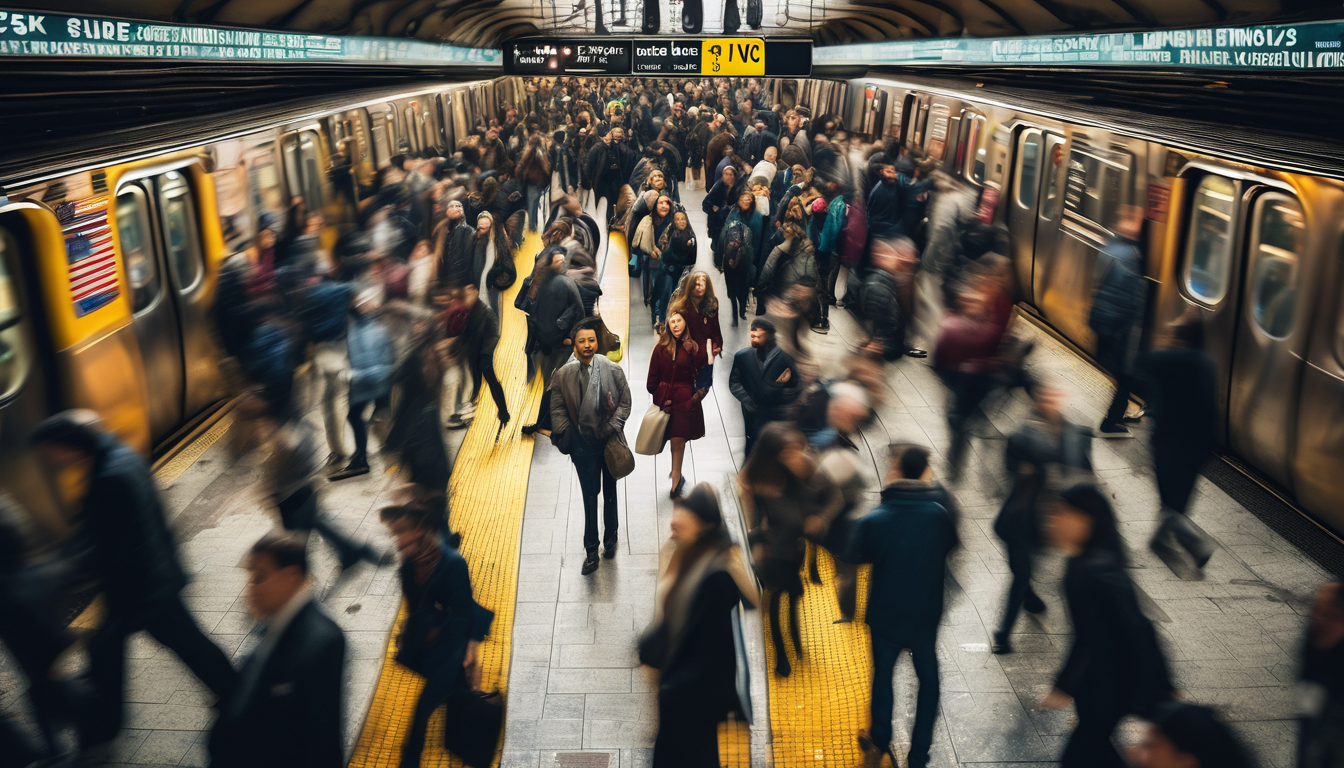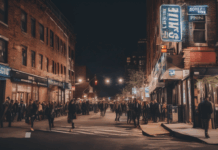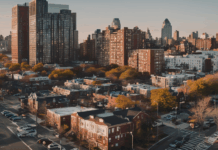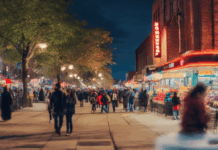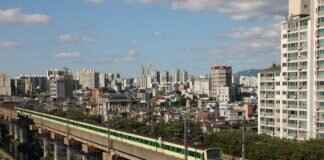If your priority is affordable, spacious accommodation with a manageable commute to Midtown Manhattan—typically 25-35 minutes by subway—then Queens, not Manhattan, is likely the better fit for most Indonesian professionals relocating to New York City.
As of November 2024, median rents in Manhattan have climbed above $4,300 for a one-bedroom flat, while in Queens, especially neighbourhoods like Astoria or Elmhurst, you can still find modern one-bedrooms for under $2,400. This price gap significantly impacts your monthly budgeting and available living space. One insider tip: many Indonesian professionals in Queens find it easier to access authentic groceries and community events, which can make settling in far smoother. However, it’s not all straightforward—while Manhattan offers unmatched proximity to jobs in finance, tech, and media, the competition for apartments can be fierce and often requires providing extensive documentation and upfront payments.
Choosing between Manhattan and Queens matters because it shapes your daily life: commute times, access to Indonesian communities, cost of living, and even your visa paperwork logistics can all hinge on your borough. The decision is tricky because work location, lifestyle preferences, and family needs may pull you in different directions—and the NYC rental market moves quickly.
This guide delivers clear, up-to-date comparisons on Manhattan vs Queens: Which Borough for Indonesian Professionals? You will find practical breakdowns of rental costs, commute times, and daily conveniences, plus expert insights into local Indonesian networks. By the end, you’ll have a confident, step-by-step answer tailored to your professional and personal priorities in NYC.
Overview of Manhattan and Queens for Indonesian Professionals
When it comes to the eternal debate—Manhattan vs Queens: Which Borough for Indonesian Professionals?—there’s no one-size-fits-all answer. After 25 years watching new arrivals hustle between boroughs, you learn: it’s all about priorities. Manhattan dazzles with its skyline and energy, but Queens, especially Jackson Heights and Elmhurst, quietly buzzes with Indonesian groceries, late-night sambal, and rent that won’t make you weep. Most Indonesian and Indian newcomers I’ve met weigh commuting, cost, and community—and usually change their minds after the first winter or rent hike.
In 2024, typical one-bedroom rents in Manhattan hover around $3,700, while Queens averages closer to $2,200, especially near 74th St/Roosevelt Ave (E/F/M/R/7 trains)—a lifeline for those working Midtown but living local. Manhattan’s proximity to finance and tech jobs is undeniable, but Queens offers practical comforts and a growing professional scene. The Indonesian community often favours Queens for its affordable supermarkets (try Indo Java, 85-12 Queens Blvd) and quicker green card processing at the Long Island City USCIS office—usually 2 weeks faster than the 68th Street Manhattan branch.
📋 Checklist: What Matters Most?
✓ Commute time to work
✓ Access to Indonesian/Indian groceries
✗ Ignoring rent increases
✓ Proximity to subway lines
✓
For many, daily life is about balance. Queens means a 30-minute E train ride to Midtown but a chance for backyard cookouts in summer. Manhattan dazzles, but can feel isolating—unless your idea of community is queuing for bubble tea on Canal Street at midnight. I’ve seen plenty switch boroughs after their first lease is up, realising which trade-offs sting more than others.
💡 Tip:
If you’re job-hunting, start in Queens—subletting is easier, and you can hop the 7 train to Grand Central in under 25 minutes.
Cost of Living and Housing Options in Manhattan and Queens
When it comes to the age-old debate of Manhattan vs Queens: Which Borough for Indonesian Professionals?, there’s no simple answer—especially not for newcomers juggling rent, visas, and the NYC subway map. Manhattan’s skyline might grab headlines, but ask around Jackson Heights or Elmhurst and you’ll get a different story. For Indonesian and Indian immigrants, the right borough can mean the difference between a supportive community and a daily grind that wears you down faster than a crosstown bus ride at 5 p.m.
Let’s be practical: as of early 2025, the average studio flat in Midtown Manhattan is a staggering $3,400/month, while a one-bedroom in Astoria hovers around $2,400. Both offer unique pros and cons, but your commute, community, and budget will likely tip the scales.
📋 What Indonesian & Indian Professionals Should Prepare:
✓ Proof of employment or university enrolment
✓ Minimum 1-2 months’ rent for deposit
✓ Valid MetroCard for subway commutes
✗ Don’t forget to check building pet policies!
Community matters here. Most Indonesians in Queens settle near Roosevelt Avenue, steps from the 74th Street-Broadway hub. You’ll find spicy rendang at Upi Jaya, halal groceries, and familiar faces. Manhattan, by contrast, offers career networking and prestige—but can feel isolating unless you’re plugged in.
💡 Local Insight:
If you crave Indonesian groceries, Queens’ Indo Java at 85-12 Queens Blvd (E, M, R trains) is a lifesaver. Manhattan’s selection is slimmer, especially for specific spices or snacks.
Job Opportunities and Industry Presence in Both Boroughs
There’s a reason the “Manhattan vs Queens: Which Borough for Indonesian Professionals?” debate never gets old. In 2024, the right answer depends on your priorities—proximity to Midtown offices, or the sense of community you’ll only find along Roosevelt Avenue. Having watched newcomers wrestle with these choices for decades, I know the decision is rarely black and white, especially for Indonesians and Indians trying to find their footing in the city that never sleeps.
Both boroughs offer their own flavours. Manhattan dazzles with its proximity to top companies, but rents on the Upper East Side or near Wall Street can easily run $3,500–$4,000/month for a studio. Queens—think Jackson Heights or Elmhurst—offers more bang for your buck, with studios around $2,000–$2,400. You’ll also find Indonesian groceries on Whitney Avenue, and the 7 train whisks you to Grand Central in 25 minutes.
📋 What You’ll Need – Quick Checklist:
✓ Proof of income (for most rentals)
✓ MetroCard for daily commutes
✓ Translated documents for residency
✗
But here’s the rub: Manhattan’s prestige can open doors for networking, while Queens boasts an authentic support network. The Indonesian community often gathers at Masjid Al-Hikmah in Astoria, and Indian expats frequent the Chatpata House on 74th Street.
💡 Pro Tip:
Queens’ diversity means you’ll find familiar food, community events, and even Bahasa Indonesian spoken at local markets—crucial for first-timers feeling homesick.
Community and Cultural Resources for Indonesian Immigrants
If you’re weighing up the classic Manhattan vs Queens: Which Borough for Indonesian Professionals? debate, you’re not alone—especially in 2024, as more Indonesian and Indian newcomers land at JFK and ask the same questions I’ve heard for decades. Both boroughs promise opportunity, but the vibe, cost, and community support couldn’t be more different. Let’s cut through the hype and late-night real estate promises.
In Manhattan, you’re centre stage—think Midtown offices, the hustle on 6th Avenue, and the proximity to consulates (try the 68th Street Indonesian mission, a few blocks from the 6 train at Hunter College). But rent for a studio? As of January 2025, expect $3,200–$3,800/month—sometimes more. In Queens, especially spots like Jackson Heights or Elmhurst, you’ll find established Indonesian and Indian communities, supermarkets on 74th Street, and a chance to swap advice over kopi tubruk at Indo Java Groceries.
📋 What You’ll Need – Checklist:
✓ Valid visa/work authorisation
✓ Proof of income (3 months paystubs)
✗ Relying solely on cash—most landlords want bank statements
Commuting is another daily reality. Manhattan’s subway arteries (A, C, 1, 2, 4, 5, N, R, Q) mean you’re always near a train—if you can bear the crowds. Queens offers the 7 train (hello, Flushing) and E/F/M for speedy Midtown access, but platforms at Roosevelt Avenue get packed during rush hour.
💡 Pro Tip:
Set up your MetroCard at Jackson Heights—Roosevelt Ave station before your first workday. This hub connects multiple lines and is open 24/7.
Factors to Consider When Choosing Between Manhattan and Queens
Manhattan and Queens—two boroughs, worlds apart, yet both are magnets for Indonesian professionals starting anew in New York City. If you’re weighing up Manhattan vs Queens: Which Borough for Indonesian Professionals?, you’re not alone. The Indonesian and Indian communities here often debate this, especially as work opportunities and daily realities shift with the seasons. Let’s get real: your choice will shape commutes, cost of living, and your sense of belonging.
In 2024, Manhattan’s Midtown and Upper East Side promise prestige and proximity to major firms—think walking distance to Madison Avenue or a short ride on the 6 train to the Financial District. But rents bite hard: a studio easily runs $3,400 per month, and the pace? Relentless. Meanwhile, Queens—Jackson Heights, Elmhurst, and Astoria—offers more space, a welcoming Indonesian enclave, and quicker access to authentic eats and faith centres. The E, F, and 7 lines whisk you straight into Midtown in 20-35 minutes.
📋 Quick Checklist: Deciding Factors
✓ Commute time to work
✓ Proximity to community (Indonesian, Indian)
✓ Rental price and apartment size
✗ Assuming
As of January 2025, Jackson Heights apartments hover around $2,250/month for a one-bed, and the area boasts Indonesian groceries on 74th Street. The local subway hub (Roosevelt Ave-Jackson Heights) runs 24/7, making late shifts manageable. In contrast, Manhattan’s fast-paced life means more networking events, but also longer work hours and pricier groceries.
You now have a clearer understanding of the key differences between Manhattan and Queens for Indonesian professionals, helping you make an informed decision that suits your lifestyle and career goals. Whether you prioritise proximity to work, affordability, or community vibe, you can approach your move with greater confidence and clarity.
Your first step is to evaluate your personal priorities and budget, then visit both boroughs if possible, to get a feel for each environment. Consider factors like commute times, housing options, and local amenities to determine which area aligns best with your needs.
Have questions about specific neighbourhoods or housing options? Curious about the best schools or community resources? For more insights, check our related guide on indonewyork.com. We’re here to help you navigate your move smoothly.

